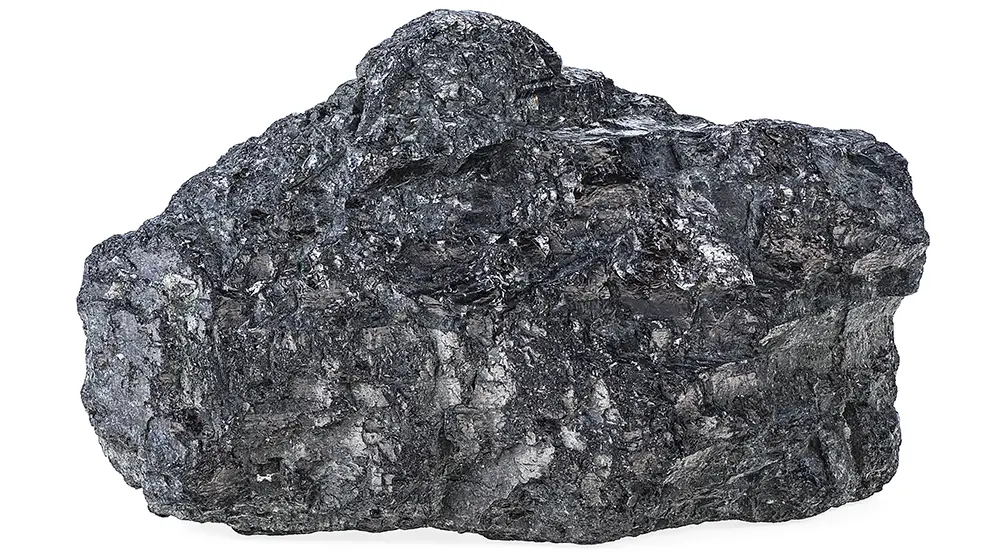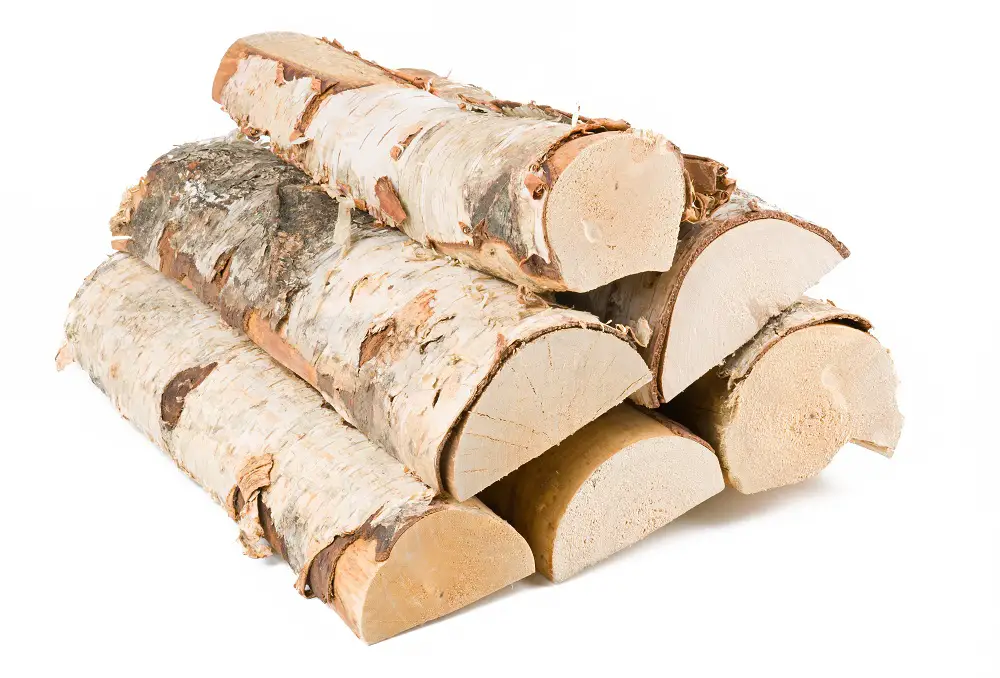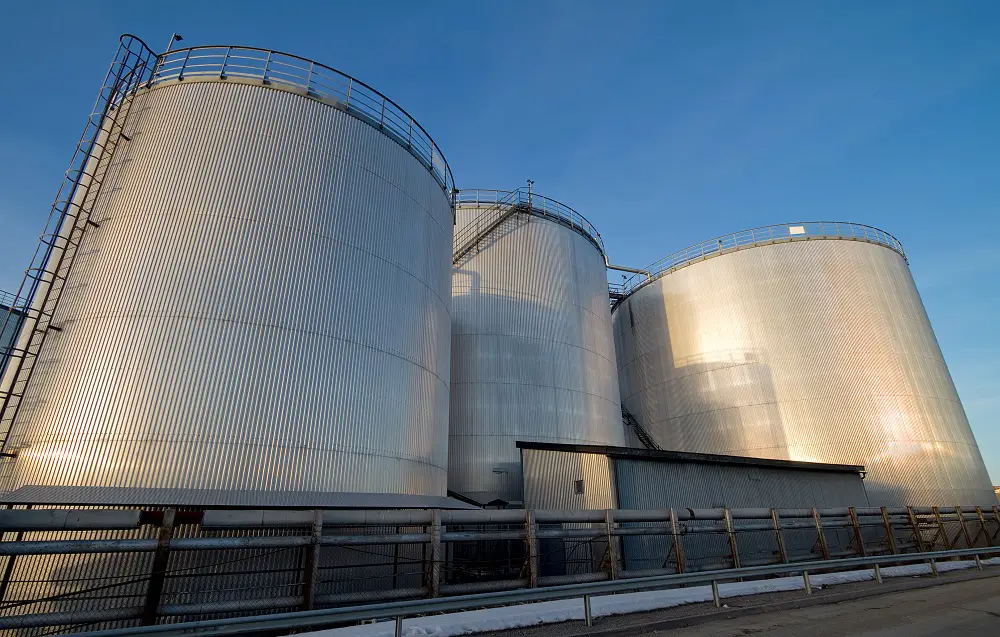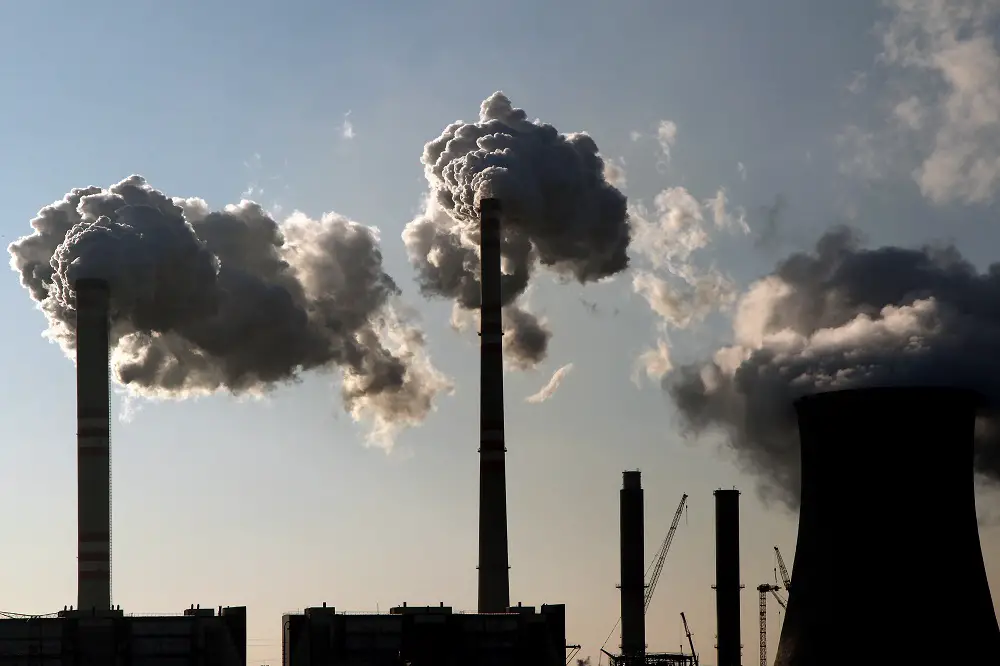Examples of Non-renewable Resources
1. Coal
Coal is a black, shiny mineral that is dug out of the ground. It is excavated either from a surface mine (or open pit / open cast mining as they are sometimes called1) or underground mining, where deep lift shafts are first dug to transport workers to the coal seams below ground.

Coal is a fossil fuel. This means it was created from tiny animals and plants that died tens of millions of years ago and have been compressed to form a highly concentrated form of carbon energy. Because it takes tens of millions of years for coal to be made, once all the coal in the ground has been dug out, there will be no more coal.
2. Crude Oil
Crude oil is a thick, black, glossy liquid. It exists in huge underground reservoirs in certain places on earth where a specific combination of geological conditions has been just right to allow it to form. It is made from the remains of dead organisms – tiny plants like algae and microscopic creatures called zooplankton that were alive before the dinosaurs walked the earth. Once these organisms died, they decayed, and over tens of millions of years, turned into oil.
Crude oil is also a fossil fuel. Once all the oil has been pumped out of the ground, there will be no more oil for tens of millions of years.
3. Products Made from Crude Oil
Crude oil is a versatile resource, and many other fuel products are manufactured from it, for example: petroleum / gasoline ; diesel oil ; naptha ; kerosene and liquefied petroleum gas (LPG). Oil is also the base material for other modern products like many plastics and pharmaceuticals.
Because all these products are made from crude oil, once the crude oil runs out, no more of them can be made.
4. Natural Gas
Natural gas is also a fossil fuel, formed underground from the remains of ancient algae and zooplankton that has decayed over tens of millions of years to turn into gas. This gas is mostly methane (CH4) although natural gas also contains significant amounts of other fuel gases: ethane, propane and butane, with trace amounts of other gases like nitrogen, carbon dioxide, hydrogen sulphide and helium.
5. Nuclear
There is some debate over whether nuclear energy should be described as renewable or non-renewable, but the fuel that is needed to power nuclear power stations is non-renewable. Nuclear fuel rods are made from a substance called uranium that is dug out of the ground. Uranium ore is mined from the ground and the uranium is extracted from it.
But the uranium is not yet good enough to power a nuclear power plant. Uranium is made up of two different kinds, called isotopes. The vast majority of uranium on the planet is an isotope called uranium-238. A very tiny amount of the uranium is a different isotope called uranium-235. It is the uranium-235 that the nuclear power plants need for their fuel rods, and the 235 isotope has to be separated out from the useless 238 isotope, which is a very complex chemical procedure.
6. Wood
Wood may seem like a renewable resource, since trees are growing all the time. Whilst this is true, remember that, as described in the opening paragraph, a non-renewable resource is one that runs out faster than it is being replenished. If wood is used up faster than trees can grow to make it, then wood is also a non-renewable resource. It is for this reason that we must make sure that we plant as many trees as we are using for wood, or else we will run out of trees, which would have catastrophic consequences for all life on earth.

An increasing number of power plants are burning wood to generate electricity. These are called biomass or bioenergy power plants, and they burn up vast quantities of wood all the time they are working. The largest in the world is the Drax Power Plant in Manchester, UK, that generates 2595 megawatts (MW) across 4 units2. In 2020, the Drax plant consumed 7.37 million tonnes of wood pellets.3 To create this much wood pellets requires felling approximately 14 million tonnes of trees. There is not enough land in the UK to grow enough trees to create this amount of wood pellets. To continue operating every day, Drax relies on continuous shipments of wood pellets imported from the US, Canada and Brazil. And this is just for one power plant (albeit a particularly large one).
7. Fresh Drinking Water
Historically, fresh drinking water has always been a renewable resource, since rain replenishes reservoirs, streams and rivers. There is a vast amount of undrinkable salt water in our planet’s oceans, with only about 3% of all the earth’s water being drinkable fresh water. Due to various geopolitical and environmental reasons, in some regions the use of freshwater exceeds the ability of natural processes to replenish it, meaning it has become a non-renewable resource in that area, causing political tensions and public health issues.




